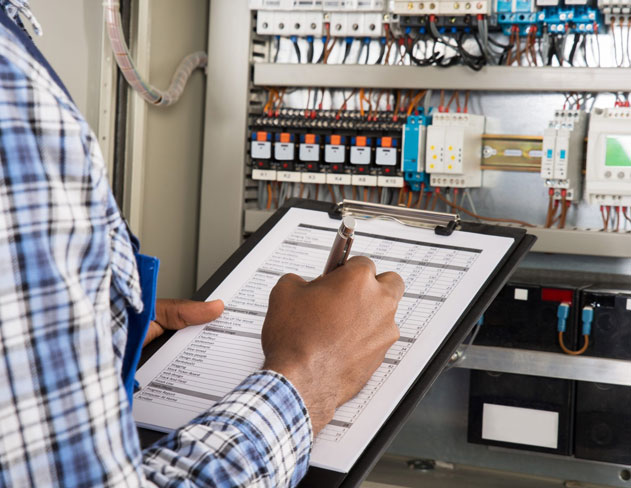A Landlords Guide to HMO EICR Regulations
Every house that you let out to your tenants as a HMO must comply with certain HMO electrical regulations. A major part of this compliance pertains to the EICR Regulations. Non-compliance could lead to a hefty fine!
At Hexo, we are specialists in electrical testing, and we can help your property pass all the HMO EICR regulations, keeping your tenants safe and ensuring that you won’t be fined for breaking any renting laws regarding electricity in your HMO property.
What is a HMO property?
A HMO property is a property that is shared between three or more different individual tenants. Each tenant rents a bedroom and shares communal spaces like the bathrooms, kitchens, and living rooms with the other tenants.
A HMO licence is only required when there are five or more tenants, but some local authorities will require additional paperwork even if your HMO is smaller.
A HMO licence in the UK will cost you around £600.
What are a landlord’s HMO responsibilities?
Landlords must follow many different HMO electrical regulations to ensure that their HMOs remain compliant, as well as other requirements that should form part of an HMO landlord checklist. These include: ensuring that fire safety measures are in place, an annual gas check, limiting overcrowding, HMO electrical testing, and keeping up with general maintenance around the property.
There are also many regulations which are specific to the property’s electrical circuits and electrical appliances, including mandatory HMO PAT testing and ensuring that the EICR regulations are strictly adhered to.
What are the electrical obligations in HMOs?
It is vital that you ensure that your property is safe for your tenants to live in, and your HMOs’ electrical installation must be tested. Before anybody moves in, safety measures must be put in place.
Here are some things to put on your HMO landlord checklist when thinking about the property’s electrics. An up-to-date EICR, PAT tested electrical appliances and smoke and carbon monoxide detectors.
What is an Electrical Installation Condition Report and Why do I need it?
An Electrical Installation Condition Report – more commonly known by its abbreviation, EICR, is an essential electrical certificate required for all HMOs.
You must ensure that the electrical installation is safe at all times – from the beginning till the end of tenancy. An EICR proves that all your electrical installation is safe.
It is a legal requirement for you to have an EICR completed on all your rented properties, a new EICR is needed every five years – or more frequently if your electrical installation is older. If you are found not to have an in date EICR, you can be fined up to £30,000.
Will I need an EICR to make a property insurance claim?
If you want to make an insurance property claim, it’s likely that your insurance issuer will require a recent Satisfactory EICR. Without one, you may not be able to make a claim.
What other important electrical certifications should my HMO property have?
Aside from an EICR, your property should also have all electrical appliances PAT Tested, this checks that the electrical equipment in the property is safe for your tenants to use.
Another one of the HMO landlord’s responsibilities is to ensure that there is working smoke detection and carbon monoxide detection.
Contact us at Hexo Electrical Testing today to arrange your HMO PAT testing or any other HMO electrical certificate.
How can I book an EICR test with Hexo?
Hexo Electrical Testing offers EICR testing throughout London, Greater London and the South East. It’s easy and quick to book with us, and we offer competitive prices too.
We can organise an EICR at short notice, and will send your EICR certificate within 5 days after the inspection, or within one day if you opt for our express service.
Our experienced NAPIT approved electrical inspectors are experts, if they find anything wrong with your electrical installation then we will send you an itemised quote for a follow-up visit to fix all the defects.
Once we have repaired your installation, we will issue you with certification for the repairs and a Satisfactory EICR.

